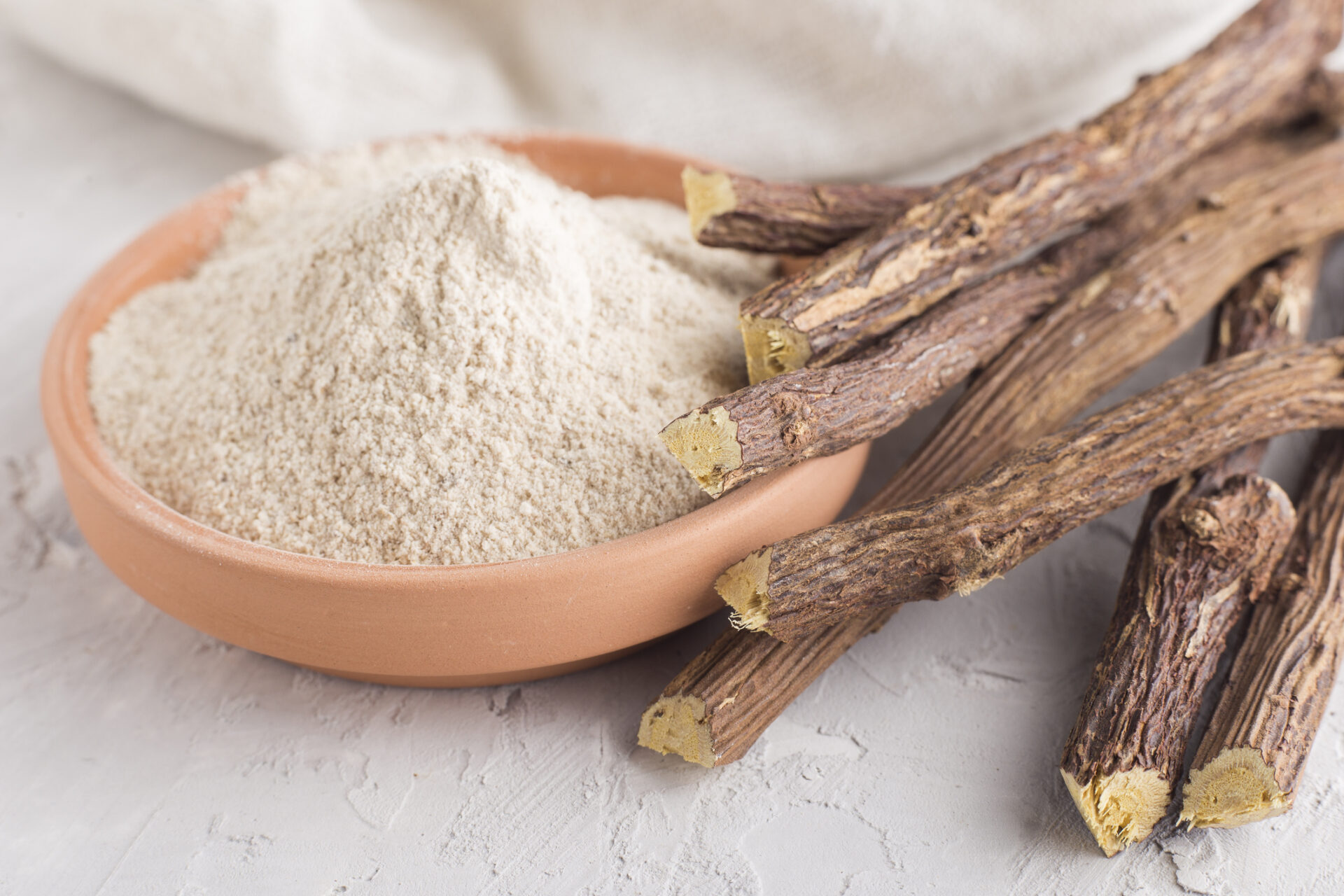Licorice is the root of a shrub, Glycyrrhiza glabra, which grows in various parts of the world, including Southern Europe, Asia, and the Middle East, and has been used since ancient times as food and a sweetener. A substance with several attributed benefits is extracted from this plant: glycyrrhetinic acid. This is a valuable ingredient, especially in the world of cosmetics. Glycyrrhetinic acid is known for its soothing, moisturizing, and anti-inflammatory properties and is thus used in a wide range of skincare products. In this article, we will explore in detail the characteristics and benefits of glycyrrhetinic acid and its cosmetic applications.
What is glycyrrhetinic acid and what are its benefits?
Glycyrrhetinic acid is a bioactive compound and the primary metabolite of glycyrrhizic acid extracted from the licorice plant. In recent years, it has received particular attention from the scientific community, which is studying its benefits in nutraceuticals and cosmetics. It is one of the main components responsible for the therapeutic properties of licorice and is widely used in both traditional and modern medicine. Currently, several benefits are associated with it, such as antibacterial, healing, and soothing effects. Its molecular structure, similar to cortisone’s, makes it a strong anti-inflammatory that is useful for treating various skin disorders such as redness, irritation, and swelling. Moreover, licorice extract rich in glycyrrhetinic acid is widely used in products for treating skin blemishes and hyperpigmentation.
It is important, however, to remember that the study of the therapeutic potential of licorice still has room for deeper exploration, especially regarding the bioavailability of the active ingredient, its half-life, and possible adverse reactions. In particular, caution should be exercised by those suffering from hypertension, kidney or liver failure. The active ingredients derived from licorice can indeed increase the amount of sodium in the blood and lead to potassium loss; therefore, its excessive use or consumption in all its forms can cause edema or headaches.
Extraction of glycyrrhetinic acid
Products based on glycyrrhetinic acid, such as creams, oils, or serums, are widely used in cosmetics to combat acne, eczema, and dermatitis. Its extraction can be carried out through a variety of methodologies, differentiated based on the type of solvent used, such as water or ethanol. The root contains between 5% and 9%, but depending on the type of solvent, the percentage of glycyrrhetinic acid extracted can increase or decrease.
Flarer for cosmetics
Flarer offers a variety of top-quality licorice extracts, such as: Mono Ammonium Glycyrrhizinate (MAG), Enoxolone, Dipotassium Glycyrrhizate (DPG), Glycyrrhiza inflata root extract, and many others. We rely exclusively on certified and controlled companies that comply with the highest European standards. This is part of our commitment not only to the pharmaceutical industry but also in the cosmetic and nutraceutical fields, allowing us to work with a wide variety of plant extracts.
The services offered include the supply of APIs to companies, managing all phases of the process from scouting to logistics. We care about the needs of those who turn to us and are aware of the importance of being able to overcome bureaucratic obstacles with agility. To receive a detailed offer of our services, we invite you to contact us.
